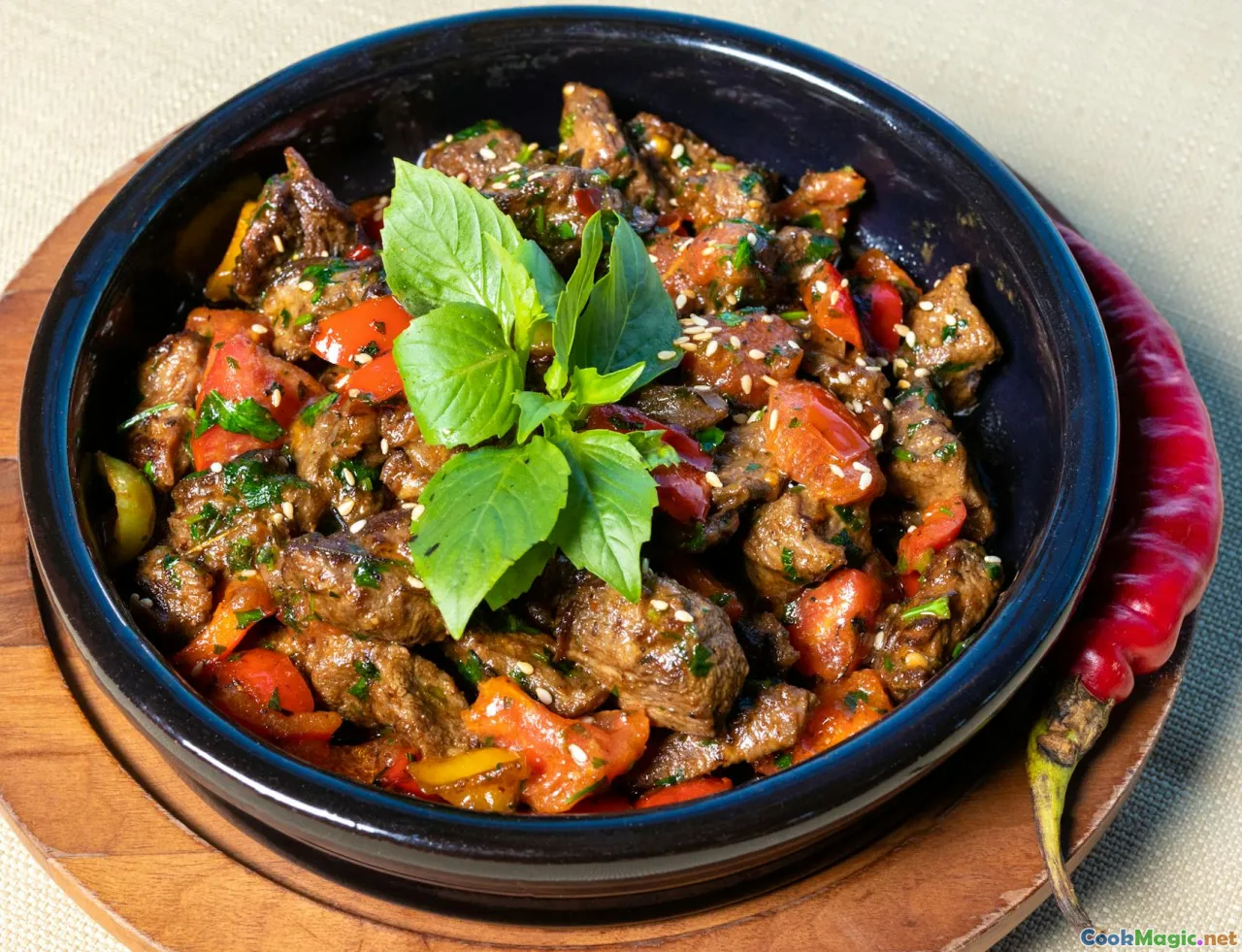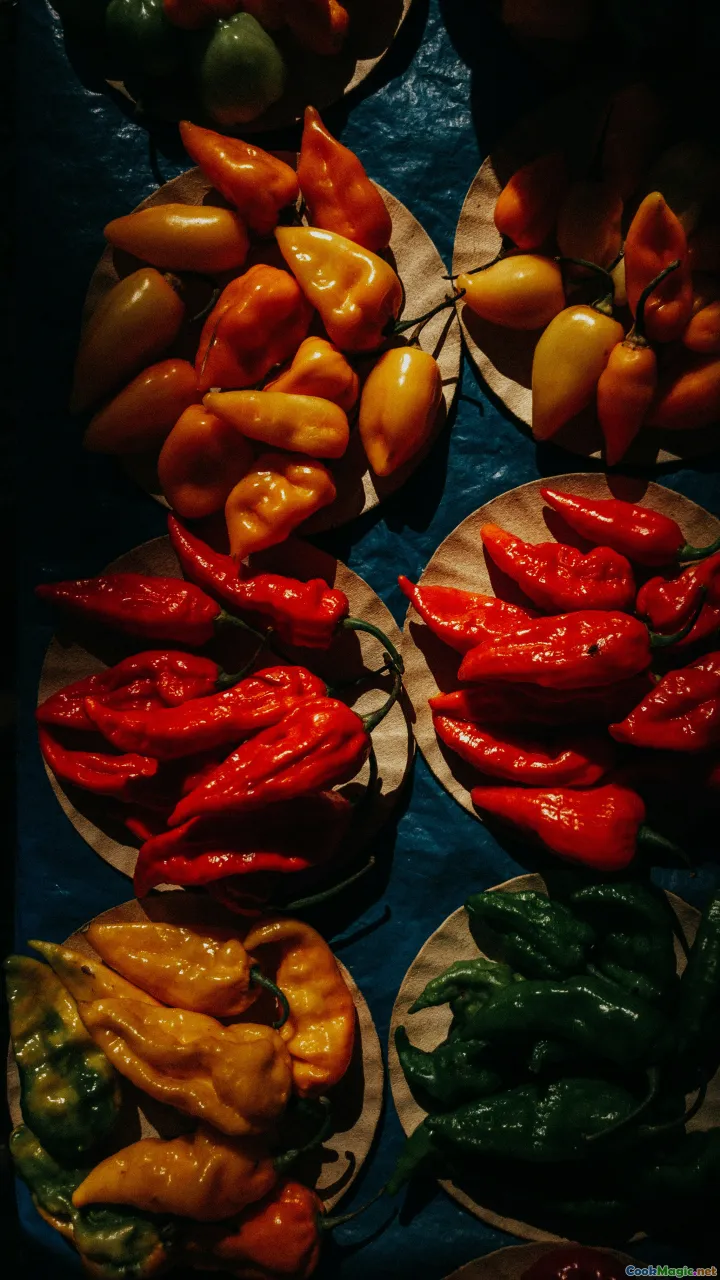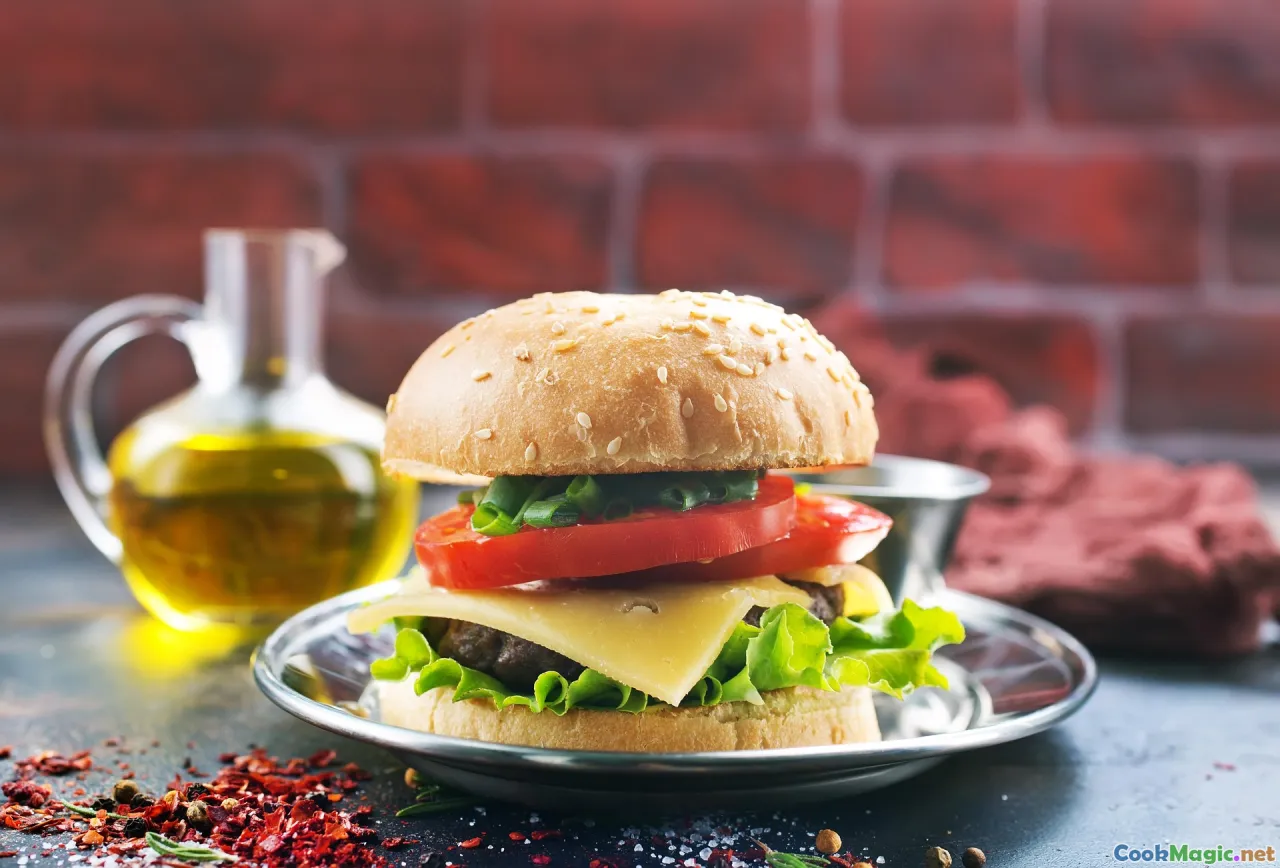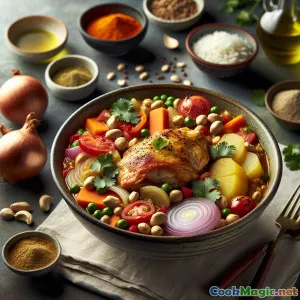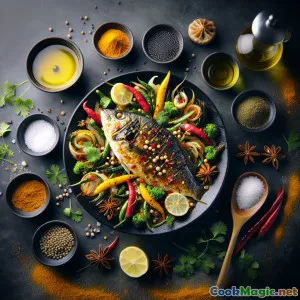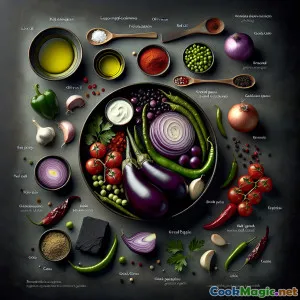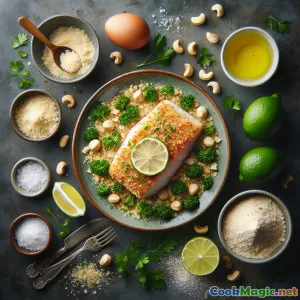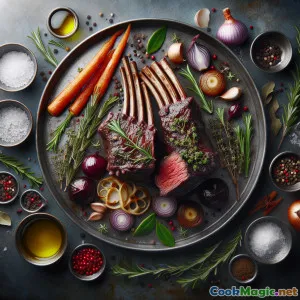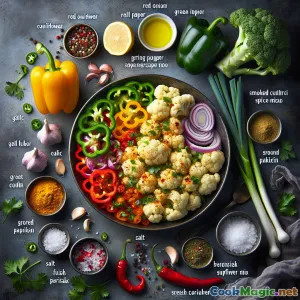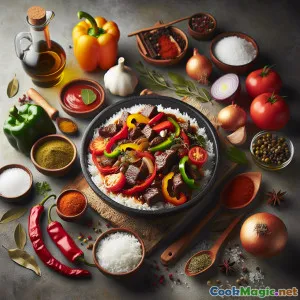
파나마식 로파 비에하 이스트메냐: 전통에 변화를 더하다
(Panamanian Ropa Vieja Istmeña: A Twist On Tradition)
(0 리뷰)재료
-
600 grams 소 플랭크 스테이크
(Trim excess fat for leaner stew)
-
1 large 붉은 피망
(얇게 썬)
-
1 large 파프리카(초록색)
(얇게 썬)
-
1 medium 노란 양파
(줄리엔)
-
4 cloves 마늘 쪽
(다진)
-
3 large 잘 익은 토마토
(Chopped, or 1 can diced tomatoes)
-
2 tbsp 토마토 페이스트
(For deeper flavor)
-
1 tbsp 아치오테 오일
(Substitute canola plus pinch smoked paprika if unavailable)
월계수 잎, 2
-
1 tsp 큐민 가루
-
1 tsp 신선한 타임
(다진)
-
2 tbsp 케이퍼
(헹군)
-
8 pieces 그린 올리브
(슬라이스)
-
1/2 piece 스카치 보넷 고추
(Remove seeds, use to taste)
-
1 tbsp 우스터 소스
(Or common soy sauce)
-
1 tbsp 백식초
-
1 tsp 소금
(맛에 따라)
-
1/2 tsp 흑후추
(갓 간)
-
400 ml 소고기 육수
(Or water with bouillon)
-
2 tbsp 신선한 고수잎
(다진, 장식용)
-
1 large 익은 플랜테인
(Fried slices, for serving)
-
400 grams 조리된 흰 쌀밥
(For serving alongside)
(Trim excess fat for leaner stew)
(얇게 썬)
(얇게 썬)
(줄리엔)
(다진)
(Chopped, or 1 can diced tomatoes)
(For deeper flavor)
(Substitute canola plus pinch smoked paprika if unavailable)
(다진)
(헹군)
(슬라이스)
(Remove seeds, use to taste)
(Or common soy sauce)
(맛에 따라)
(갓 간)
(Or water with bouillon)
(다진, 장식용)
(Fried slices, for serving)
(For serving alongside)
영양 정보
- 인분: 4
- 1인분 크기: 1접시 (250g)
- Calories: 560 kcal
- Carbohydrates: 52 g
- Protein: 34 g
- Fat: 22 g
- Fiber: 5 g
- Sugar: 7 g
- Sodium: 980 mg
- Cholesterol: 70 mg
- Calcium: 75 mg
- Iron: 4.2 mg
조리법
-
1 - Cook the Beef:
Place the flank steak in a large pot. Cover with beef stock (or water), add 1 bay leaf, and a sprinkle of salt. Bring to fruit simmer, then allow it to cook, covered, for 60 minutes or until fork-tender. Skim off any foam.
-
2 - Cool and Shred Beef:
Remove beef from broth, let cool slightly. Shred with two forks into long strands; set aside. Reserve the beef broth for later.
-
3 - Sauté Aromatics:
Heat achiote oil in a deep pan or dutch oven. Sauté onions and bell peppers until softened. Add garlic; cook until fragrant.
-
4 - Add Tomatoes & Spices:
Add chopped tomatoes and tomato paste. Cook for 8 minutes, letting the tomatoes break down. Stir in cumin, thyme, remaining bay leaf, and scotch bonnet if using. Season with pepper.
-
5 - Simmer With Meat:
Stir in shredded beef, capers, olives, vinegar, Worcestershire. Pour in 300ml reserved broth. Mix well and simmer uncovered until the flavors meld and stew thickens slightly.
-
6 - Finish & Garnish:
Check seasoning, adding salt/pepper or extra vinegar to balance. Remove bay leaves. Garnish generously with coriander, and serve hot with rice and fried plantains.
Place the flank steak in a large pot. Cover with beef stock (or water), add 1 bay leaf, and a sprinkle of salt. Bring to fruit simmer, then allow it to cook, covered, for 60 minutes or until fork-tender. Skim off any foam.
Remove beef from broth, let cool slightly. Shred with two forks into long strands; set aside. Reserve the beef broth for later.
Heat achiote oil in a deep pan or dutch oven. Sauté onions and bell peppers until softened. Add garlic; cook until fragrant.
Add chopped tomatoes and tomato paste. Cook for 8 minutes, letting the tomatoes break down. Stir in cumin, thyme, remaining bay leaf, and scotch bonnet if using. Season with pepper.
Stir in shredded beef, capers, olives, vinegar, Worcestershire. Pour in 300ml reserved broth. Mix well and simmer uncovered until the flavors meld and stew thickens slightly.
Check seasoning, adding salt/pepper or extra vinegar to balance. Remove bay leaves. Garnish generously with coriander, and serve hot with rice and fried plantains.
파나마식 로파 비에하 이스트메냐: 전통에 변화를 더하다 :에 대한 자세한 정보
Ropa Vieja Istmeña: Isthmian Essence in Every Bite
Ropa Vieja means “old clothes” in Spanish—named for its unique appearance: long threads of slow-cooked beef, tangled much like worn garments. Rooted in Spanish colonial cuisine, the original Ropa Vieja traveled with Sephardic Jews and became iconic in Cuba, spreading across the Caribbean with various regional spins. In Panama, Ropa Vieja evolved along the Isthmian corridor: taking in influences from Afro-Caribbean, Indigenous, and Spanish cookery, resulting in flavors that are both tropical and savory, invoking the country's bridge-like geography, cuisine, and cultures. The “Istmeña” version blends Panama’s bold peppers, tangy seasonings, heady spices, and often a subtle dash of heat and Caribbean brininess from olives and capers.
Preparing Ropa Vieja Istmeña
This is a celebration stew. Often, the meat is simmered for celebrations, Sunday brunch or gatherings, showcasing patience, love for lively flavors, and a preference for stone-ground spices.
The beef—traditionally flank steak—is cooked low-and-slow until so unctuously tender, it can be torn apart with a fork. It’s stewed with a medley of red and green peppers (for color and sweetness), onions, plenty of garlic, and fresh local tomatoes for acidity and body. Uniquely Panamanian additions like achiote oil bring a russet hue, while a pinch of thyme and cumin evoke the rainforest. Scotch bonnet offers subtle, tingling background heat without overwhelming (and is often omitted for family dinners).
The briny funk of capers and sliced green olives is characteristic of Panama’s hybrid approach, borrowing from local favorites like arroz con pollo and new-world Spanish picadillo. A finishing splash of vinegar and Worcestershire rounds out the “Istmus” mouthfeel—balancing beefy richness with bright tartness, just as the two oceans meet at Panama’s shores.
Tips & Notes
- Achiote Oil: Adds color and its signature earthy pepper payoff. If not at hand, a swirl of canola plus paprika offers a fine stand-in.
- Rice & Plantains: Sticky white rice is the preferred accompaniment to soak up every bit of sauce—don’t skip it! Fried, ripe plantains are optional but bring a creamy-sweet contrast.
- Peppers: Use fresh, bold bell peppers for classic flavor. Swap in poblanos for a smokier touch or add more or less heat to suit your crowd.
- Leftovers: Ropa Vieja is even tastier the next day. It can be repurposed for sandwiches, tacos (Panamanian hojaldras make divine breadfolds), or mixed into a hearty breakfast hash.
History & Cultural Notes
Panama’s official Ropa Vieja was first popularized in the lowlands but soon spread east and west by café and fonda cooks alongside sancocho, forming the national trinity with arroz con pollo. You’ll find every family adding their twist: some deploy carrots, sweet corn, or even a few raisins. But Istmeña is unique for the interplay of briny, sweet, and tropical notes—a direct result of being a cultural crossroads. The symbolic “mixing” of ingredients in the pot echoes Panama’s mixture of people, languages, and trades moving through the canal ports for centuries.
Unique Aspects & Personal Thoughts
The best part of Ropa Vieja Istmeña is how inviting and inclusive it is: this is a stew nearly designed to bring people together around the table, improvising according to available ingredients. Its making is therapeutic—transforming a tough, economical beef cut into something unforgettable. No two Ropa Viejas are ever exactly the same.
When I prepare this stew, I love sipping an ice-cold chicha de saril (hibiscus lemonade) and listening to the bubbling sauce as aromatic vapors fill the kitchen. Leftovers improve with age, becoming hearty breakfast fillings or makeshift feast boxes for guests. The colors, aromas, and flavors of this dish marry comfort and adventure—the true “isthmian” spirit right on your home table.

